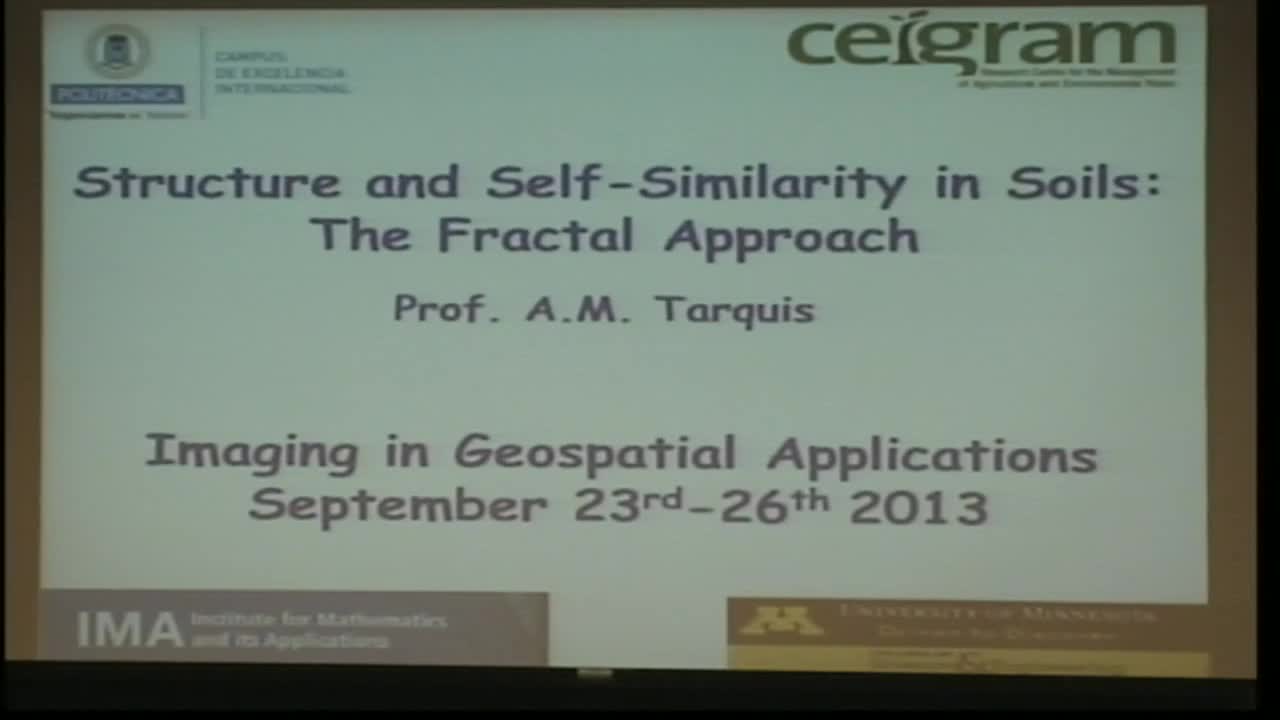Structure and Self-Similarity in Soils: The Fractal Approach
Presenter
September 23, 2013
Keywords:
- Sensitivity, optimal
MSC:
- 49K40
Abstract
Soil structure is the arrangement of soil particles into secondary units called aggregates or peds. These manifest the cumulative effect of local pedogenic processes and influence soil behaviour - especially as it pertains to aeration and hydrophysical properties. One of the most direct methods of probing and characterizing soil structure is the analysis of the spatial arrangement of pore and solid spaces on images of sections of resin-impregnated soil or non-disruptive CT scanning. CT images involve a revolving x-ray tube that surrounds a soil sample and a detector unit to produce 2-D images to provide grey-level images of slices that after computer integration generates 3-D images. Then a threshold method is applied to extract a binary image.
Over the last years, a series of authors have applied fractal techniques to the characterization of pore-scale images of soil. The objective is to extract fractal dimensions, which characterize multiscale and self-similar geometric void phase structures within the two-dimensional or three-dimensional images. If such a hierarchical structure exists then we expect to see in the image that the soil matrix viewed at different resolutions looks the same.
More recently interest has turned to multifractal analysis of images of porous media. A multifractal or more precisely a geometrical multifractal is a non-uniform fractal, which unlike a uniform fractal exhibits local density fluctuations. Its characterization requires not a single dimension but a sequence of generalized fractal dimensions. A multifractal analysis to extract these dimensions from a soil image may have utility for more complex distributions of solid or void in space, if there is marked variation in local density or porosity.
Our purpose is to briefly review what has been done in this field with fractal and multifractal analysis and discuss the restrictions linked with the characterisation of soil binary images. Finally we will apply an innovative approach to quantifying soil voids and pore networks in original X-ray CT imagery using Relative Entropy index. These will be illustrated using typical imagery representing contrasting soil structures. Particular attention will be given to the need to consider the full 3D context of the CT imagery, as well as scaling issues, in the application and interpretation of this index.
